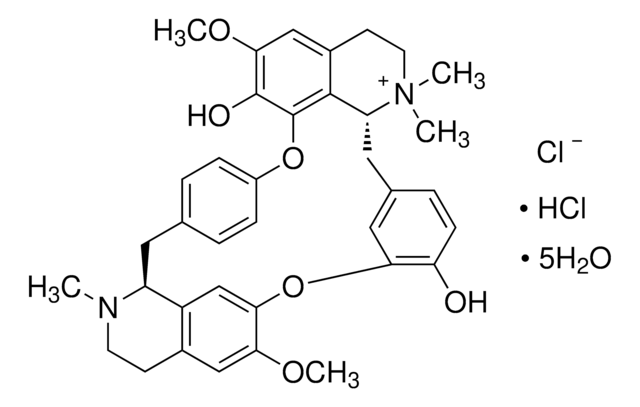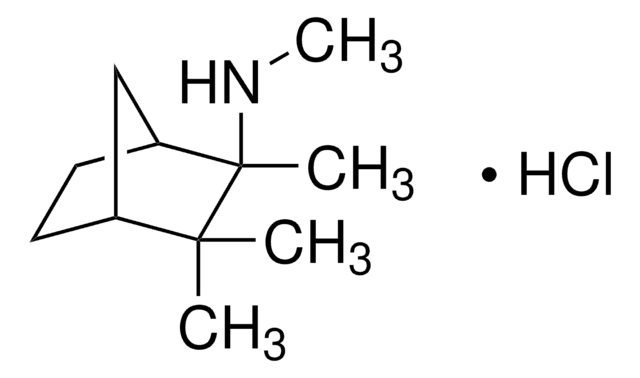A0325200
Alcuronium chloride
European Pharmacopoeia (EP) Reference Standard
Sinonimo/i:
N,N′-Diallylnortoxiferinium dichloride
About This Item
Prodotti consigliati
Grado
pharmaceutical primary standard
Famiglia di API
alcuronium
Produttore/marchio commerciale
EDQM
applicazioni
pharmaceutical (small molecule)
Formato
neat
Temperatura di conservazione
−20°C
Stringa SMILE
[Cl-].[Cl-].[N+]21([C@@H]3C4([C@H]5N(c%11c4cccc%11)\C=C6/[C@@H]7N(c8c(cccc8)C97[C@H]%10[N+](CC9)(C\C(=C\CO)\C/6C%10)CC=C)\C=C/5\C(C3)\C(=C/CO)\C2)CC1)CC=C
InChI
1S/C44H50N4O2.2ClH/c1-3-17-47-19-15-43-35-9-5-7-11-37(35)45-26-34-32-24-40-44(16-20-48(40,18-4-2)28-30(32)14-22-50)36-10-6-8-12-38(36)46(42(34)44)25-33(41(43)45)31(23-39(43)47)29(27-47)13-21-49;;/h3-14,25-26,31-32,39-42,49-50H,1-2,15-24,27-28H2;2*1H/q+2;;/p-2/b29-13-,30-14-,33-25-,34-26-;;/t31?,32?,39-,40-,41-,42-,43?,44?,47?,48?;;/m0../s1
CPYGBGOXCJJJGC-ZHNYPADJSA-L
Descrizione generale
For further information and support please go to the website of the issuing Pharmacopoeia.
Applicazioni
Confezionamento
Altre note
Avvertenze
Danger
Indicazioni di pericolo
Consigli di prudenza
Classi di pericolo
Acute Tox. 2 Oral
Codice della classe di stoccaggio
6.1A - Combustible acute toxic Cat. 1 and 2 / very toxic hazardous materials
Classe di pericolosità dell'acqua (WGK)
WGK 3
Punto d’infiammabilità (°F)
Not applicable
Punto d’infiammabilità (°C)
Not applicable
Scegli una delle versioni più recenti:
Certificati d'analisi (COA)
It looks like we've run into a problem, but you can still download Certificates of Analysis from our Documenti section.
Se ti serve aiuto, non esitare a contattarci Servizio Clienti
Possiedi già questo prodotto?
I documenti relativi ai prodotti acquistati recentemente sono disponibili nell’Archivio dei documenti.
Il team dei nostri ricercatori vanta grande esperienza in tutte le aree della ricerca quali Life Science, scienza dei materiali, sintesi chimica, cromatografia, discipline analitiche, ecc..
Contatta l'Assistenza Tecnica.







